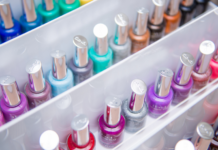 Something I enjoy doing is taking social media trends, adjusting them to fit my life, and seeing if they work. The latest in my “Trend Trials,” if you will, is a No Spend [insert time amount here]. With the start of the year, I thought it was a good time to begin this trial as the new year brings a very clear start and stopping point. I have looked into this trend quite a bit because who doesn’t love to save money, right?
Something I enjoy doing is taking social media trends, adjusting them to fit my life, and seeing if they work. The latest in my “Trend Trials,” if you will, is a No Spend [insert time amount here]. With the start of the year, I thought it was a good time to begin this trial as the new year brings a very clear start and stopping point. I have looked into this trend quite a bit because who doesn’t love to save money, right?
Here are some of the things I have learned while researching this No Spend trend:
- Set very clear rules on what counts as “spending.”
- Set a clear time frame.
- Start small and work up to more time.
- Offer yourself a reward for your accomplishments.
A general rule I live by is setting reasonable expectations. Don’t set unrealistic goals and set yourself up for failure. I know myself well enough to know that setting a NO spend goal is setting up unrealistic expectations and I would be letting myself down. I do not go crazy with spending, but I do find myself buying things I don’t necessarily need.
So here’s how I have modified this trend:
- Set clear rules on what counts as spending: When I say spending here, it means more unnecessary spending. Grocery shopping and essentials (such as toiletry items) don’t count in this category. Fast food pick-up counts towards spending. We also have spent the last year putting in an addition and doing massive renovations to our house. There are still several projects that need to be completed. Funds spent on home renovations will not count toward the spending category as long as it has been previously discussed and a budget is set in place. We also have a child with special needs which can get quite costly. When it comes to purchasing things for him, it will not count as spending as long as it is something needed. For example: replacing his cup for the 50th time because he chewed through the straw: necessary. Buying him a new t-shirt because it is cute when he already has a drawer overflowing: not necessary. We also agreed that when we finally get a chance to go out on a date night, it would not count toward spending. Since we get this opportunity so infrequently and our dates aren’t ever over-the-top expensive, this really doesn’t break the bank.
- Set a clear time frame: The reason I wanted to start at the beginning of the year is that it gives me a very clear time frame with which to work. I want to see over the year how much I can resist spending. My brain can comprehend goals a lot better when I have a very clear timeline. A complete year just seemed so balanced to me.
- Start small and work up to more time: I chose not to start small and build time. However, this is recommended if you plan on completely cutting out spending. In fact, it’s recommended that you start not spending for maybe a week and then move onto a month. Because I wanted to do it for the entire year, I changed what is a NO spend challenge into a LOW spend challenge.
- Offer yourself a reward for your accomplishments:I have kept track of the days I did not do any spending. I have a Skylight digital calendar (shout out to that thing as it’s amazing!) where I have set “no spending” as a daily chore and have it set to reward me with a star each day that goal is completed. I can then redeem my stars. Example: Girls’ night: 30 stars (30 days of no spending).

Does this mean we are never allowed to spend money on anything fun? We have always given ourselves a set amount of money each week, but we have not been overly strict about it. This money is supposed to be used on any leisure items, hobbies, etc. This plan allocates our only free spending money. Once that money is gone, it’s gone and we have to wait until the next week. Any money left over at the end of the week is still ours to save.




















I am doing this year myself since I went a money crazy last year to 2024 being really tough.. I live in CA however need motivation to stay the course.. it’s hard to find although I have a new daily routine I am trying out to be more helpful with my time and activities so I don’t think about spending or shopping…
It seems to be so easy to go a little money crazy!! I am hopefully going to update ( with hopefully helpful knowledge and success) throughout the year. It really is all about finding out what works for you! I love checking things off a list and getting little rewards! I hope your new daily routine works for you!!